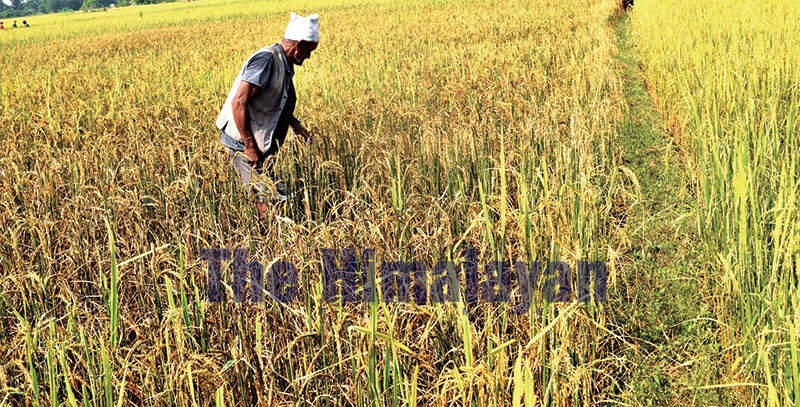Paddy output falls to lowest in 3 yrs
- Likely to affect overall agro output, economic growth
Kathmandu, December 29
Paddy output has fallen for the first time in the last three years to 5.55 million metric tonnes in the current fiscal, raising serious doubts over the government’s plan to achieve 8.5 per cent economic growth.
This primary production statistics of the cereal crop was presented at the first review meeting held today at the Ministry of Agriculture and Livestock Development and the ministry is expected to release the official paddy production data within the next few days after another review meeting to be held soon.
However, as MoALD officials themselves have acknowledged that statistics presented during the first review meetings are later inflated, the data presented today may not be the final one. Hence, the actual paddy production in 2019-20, stated to be 5.55 million metric tonnes today, could likely be inflated in the next review meeting.
“The ministry will further review the paddy production data before making it public. It is clear that not only the production target of paddy has been missed this year but the output is even less compared to the last fiscal’s production. However, the final data following the review meeting is likely to hover around last year’s production,” an anonymous source at MoALD told THT.
The country had produced record paddy output of 5.61 million tonnes in fiscal 2018-19 and the government had projected the output of paddy to be close to six million tonnes this fiscal. Production of the cereal crop started increasing in 2017-18 when paddy output was recorded at 5.15 million tonnes.
Officials at the ministry blamed the fall in paddy output this year primarily on the faulty Garima brand paddy that did not yield rice grains across the country, including in Chitwan, Rautahat, Nawalparasi, Nuwakot, Lamjung, Gorkha and Tanahun. The Garima brand paddy was planted across 1,500 hectares of land, affecting production of almost 8,500 tonnes of paddy.
Along with the ‘Garima’ factor, unavailability of seeds on time despite favourable monsoon too has hit the overall output, informed the MoALD source. Meanwhile, paddy plantation this year was also carried out on less volume of arable land compared to the last fiscal. Though the crop was planted on 95.39 per cent of 1.37 million hectares of arable land in 2018-19, it was planted on only 94.42 per cent of arable land this year.
Meanwhile, the fall in paddy output this year is also expected to hit the ambitious economic growth target of the government. Paddy accounts for one-fifth of total agricultural GDP of the country. While the contribution of agriculture sector towards the country’s gross domestic product is 27 per cent, paddy accounts for more than 50 per cent of the total agriculture production.
“While agriculture has a major stake in Nepal’s economy and since paddy has major contribution to the overall agricultural output, fall in paddy production will certainly affect economic goals unless production of other crops compensate the gap,” opined Biswo Poudel, an economist.






